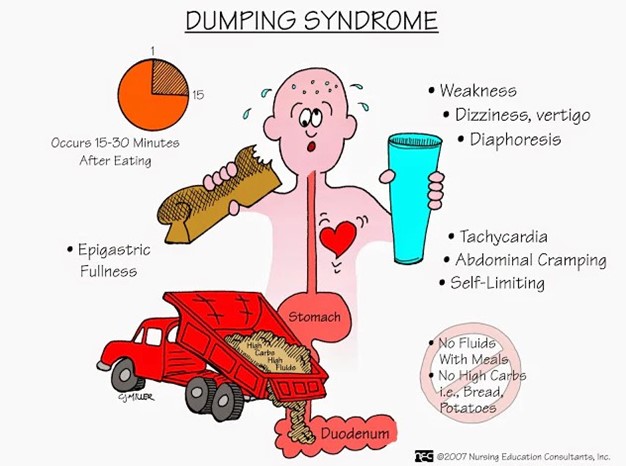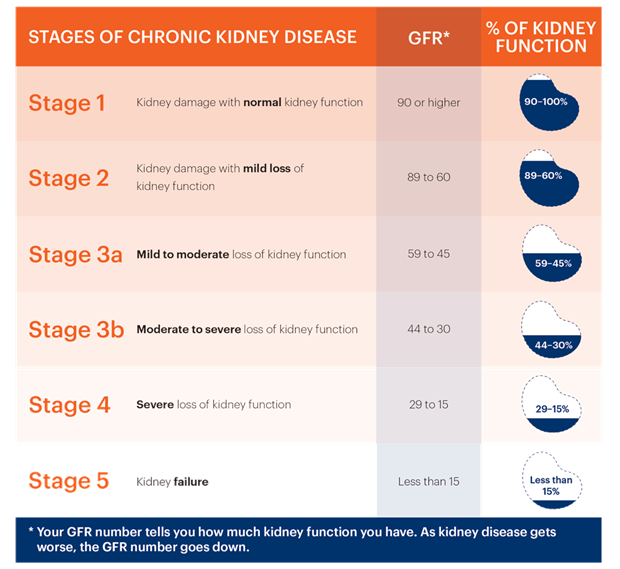In order to prevent dumping syndrome after Gastric Bypass surgery, the nurse will instruct the client to....
Take a brisk walk after eating.
Avoid excessive sugar and carbohydrates.
Increase fluid intake with meals.
Take the proton pump inhibitors as prescribed.
The Correct Answer is B
Dumping syndrome is a common complication after Gastric Bypass surgery, where food moves too quickly from the stomach to the small intestine. It occurs when the undigested contents of the stomach are "dumped" rapidly into the small intestine, leading to symptoms such as nausea, vomiting, abdominal cramps, diarrhea, lightheadedness, and sweating.
To manage dumping syndrome, it is important for the client to avoid foods and beverages that are high in sugar and carbohydrates. Consuming these types of foods can trigger rapid gastric emptying and exacerbate the symptoms. Instead, the client should focus on a well-balanced diet that includes lean proteins, healthy fats, and complex carbohydrates.

Nursing Test Bank
Naxlex Comprehensive Predictor Exams
Related Questions
Correct Answer is ["B","C","D","E"]
Explanation
The initial bundle of care in sepsis includes the following:
- Obtain blood cultures: Blood cultures help identify the specific microorganism causing the infection, which is important for guiding appropriate antibiotic therapy.
- Administer broad-spectrum antibiotics: Early administration of antibiotics is crucial in sepsis to target the suspected or likely infectious organisms. Broad-spectrum antibiotics cover a wide range of potential pathogens until more specific information from culture results is available.
- Obtain lactate levels: Measuring lactate levels helps assess tissue perfusion and can be used as an indicator of the severity of sepsis. Elevated lactate levels are associated with tissue hypoperfusion and increased mortality.
- Administer IV fluid bolus: Early aggressive fluid resuscitation is an essential component of sepsis management. Administering intravenous fluids helps restore intravascular volume and improve tissue perfusion.
- Administration of vasopressors: Especially in the setting of hypotension and to maintain MAP above 65mmHg.
Correct Answer is C
Explanation
The glomerular filtration rate is a measure of how effectively the kidneys filter waste and excess fluid from the blood. It is a key indicator of kidney function. CKD is staged based on the GFR, which provides an estimate of the percentage of normal kidney function remaining.
While serum creatinine and urea levels are important markers used to assess kidney function, they are not the sole criteria for staging CKD. The degree of altered mental status and total daily urine output are important clinical observations but are not used for staging CKD.

Whether you are a student looking to ace your exams or a practicing nurse seeking to enhance your expertise , our nursing education contents will empower you with the confidence and competence to make a difference in the lives of patients and become a respected leader in the healthcare field.
Visit Naxlex, invest in your future and unlock endless possibilities with our unparalleled nursing education contents today
Report Wrong Answer on the Current Question
Do you disagree with the answer? If yes, what is your expected answer? Explain.
Kindly be descriptive with the issue you are facing.
